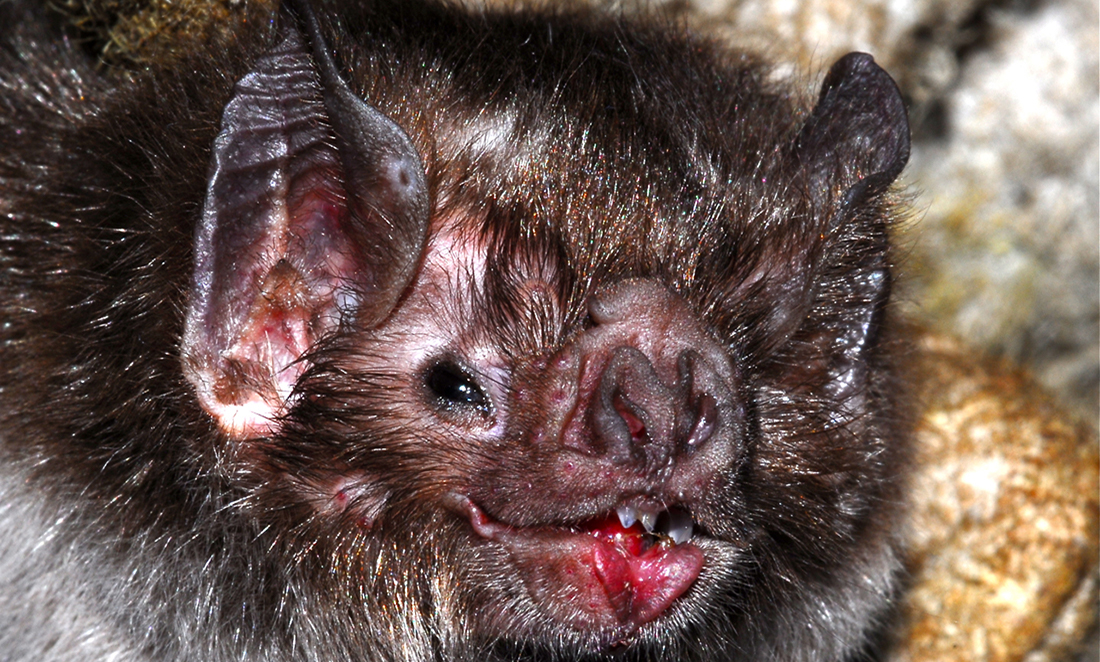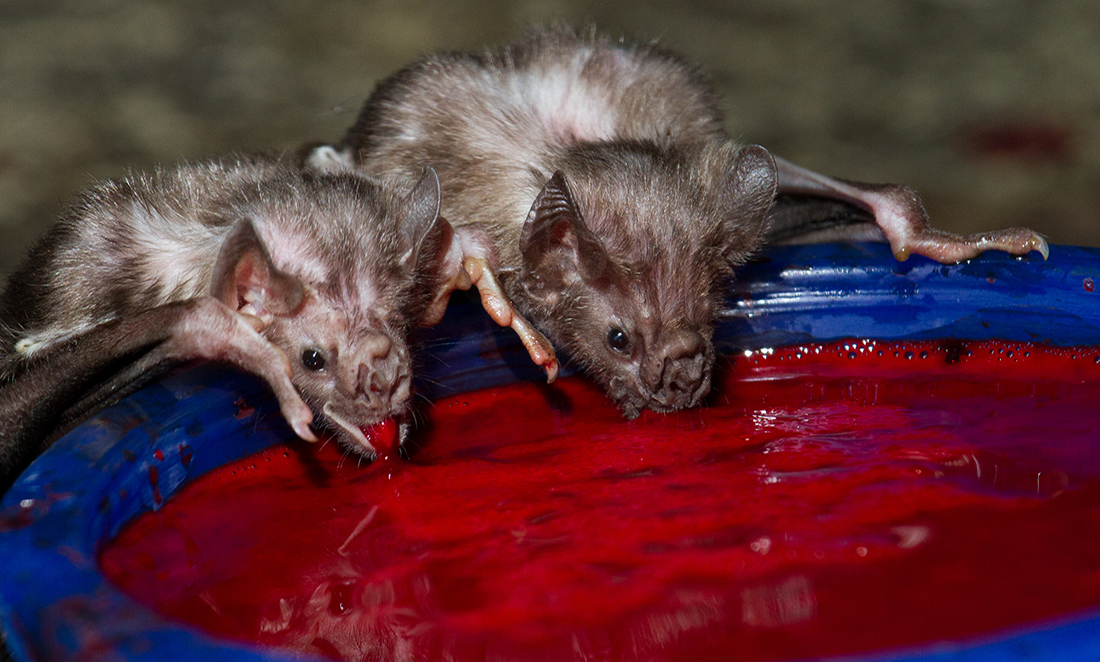Blood is a pretty risky meal.
It doesn’t carry much nutritional reward – blood is exceptionally low in almost all nutrients, vitamins and minerals apart from iron.
And there’s the risk of being exposed to a whole host of diseases including rabies, Ebola and HIV.
Even if you get past the life-threatening diseases, there’s then a whole load of protein to deal with – and processing that much can place a huge amount of pressure on the kidneys.
But in spite of all this, vampire bats drink the red stuff on a regular basis.
So what’s made these suckers choose the gothic option instead of the traditional fruit’n’flies diet? And how has it not killed them?
JUMPING GENES
Recent genetic analysis has given researchers a new hint in how the vampire bat came to be.
DNA analysis suggests that it’s been a joint evolutionary effort between the bat’s genes as well as the bugs that live in their guts.
International researchers including geneticists from Curtin University analysed the genome of the common vampire bat and the DNA present in its microbiome (collected via faecal samples).
Together, these two sets of DNA are called the hologenome – the entire set of living genes in the organism.
The vampire bat’s hologenome was then compared with those of bats that ate insects, fruit, nectar or meat.
The differences the researchers found suggest that both the bloodsucking bat and its gut bugs have undergone evolutionary change to enable their vampiric habit.

While the bat genome was similar in size to that of the other bats, it contained more jumping genes.
These are sections of the genome that are able to copy and paste themselves at multiple positions throughout the DNA. Scientists call them transposons.
One particular type of transposon was 2.2 times more present throughout the common vampire bat’s genome than in that of its fruitier cousins.
These jumping chunks of genetic code mostly turned up in vampire bat DNA sequences that coded for immunity, viral defence and lipid and vitamin metabolism.
By having more transposons present, the researchers suggested the bat’s DNA would be disrupted more often, allowing it to adapt to its bloody diet.
It would be better able to process the large amount of blood required to sustain it without succumbing to illness.
Vampire bats: IT TAKES GUTS
But it wasn’t only the vampire bat’s genome that appeared to evolve.
Its gut microbiome presented entirely differently to that of nectar-feeding, fruit-eating and meat-eating bats, and researchers suggest a unique collection of gut bacteria helps the bloodsuckers get the most out of their meals.
There were more than 280 species of bacteria present in the faeces of the vampire bats that would have made other mammals very ill.
However, many of these 280 species are known to be transmitted by bloodsucking insects such as ticks and mosquitoes. Could they be a necessary feature of all blood-based diets?

There were other signs that bacteria within the digestive system prevented the vampire bat’s bloody meal from clotting on its journey through the bat’s gut.
Certain varieties of bacteria with antiviral properties were found in large proportions in the vampire bat guts.
These digestion-assisting and immunity-protecting bacteria would likely have been incorporated into the microbiome alongside changes to the bat’s genome.
YOU ARE WHAT YOU EAT
Scientists suggest that vampire bats made the shift towards bloodsucking behaviour millions of years ago.
Perhaps by shifting from eating all insects to eating only bloodsucking parasites, they were able to specialise and make their feeding technique highly efficient.
Then, by cutting out the insect middleman and consuming solely blood, they reduced all competition from other animals who would otherwise be eating their meals. They created a niche in which they could thrive … as long as they could survive the bloodborne diseases.
Thus, those bats whose genes mutated were able to adapt faster, and that’s where having lots of transposons might have come in handy for the vampire bat.
Coincidentally, about half of the human genome is made of transposons. So why haven’t we evolved into vampires with the ability to drink the nutritionally and ethically dubious substance?
Whilst human history is scattered with cases of vampirism, our evolutionary circumstances haven’t necessitated quite the genetic changes that come with a blood-only diet.
We’re not certain of the environmental pressures that our ancestors experienced, but it seems that evolving the pointed canines and blunted molars of an omnivore seemed to help mankind survive. This allows us to eat a bit of everything, apart from blood. We’ll leave that one to the bats.








